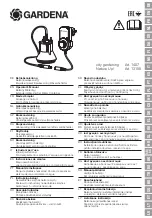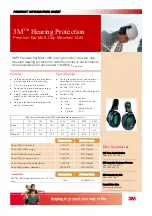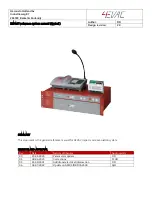
Operator's Manual
WP700Zi-OM-E-RevA
358
Next X
End Sub
Here is an example showing a simple one-pole roll-off compared to a curve.
Control Variables in CustomDSO
The simplest way to select variables for use in CustomDSO is to use LeCroy’s X-Stream Browser.
DFP Filters Overview
The Need
In today's complex environment, data is frequently composed of a mixture of analog and digital components
spread over a broad range of frequencies. In many applications, the relevant data is encoded or obscured.
Capturing the right signals becomes a challenge. Engineers find it increasingly difficulty to examine only those
parts of the data they are interested in. Traditional (or even smart) oscilloscope triggering cannot always provide a
satisfactory answer.
For example, servo motors from disk drives add a low frequency component to the high frequency data output. It
is hard to achieve an accurate analysis of data unless the low component is removed.
Another common example is switched power supply units, which inject the switching frequency component into
many system parts. Viewing digital signals mixed with this switching frequency component could be very difficult.
Filtering is definitely required.
Yet another example is in ADSL residential connectivity, where data is transmitted over 256 narrow bands. Each
band is only 4.7 kHz wide, and the gap between two adjacent bands is also 4.7 kHz. Examining such complex
waveforms with regular DSOs is almost impossible; filtering out unwanted frequency components is necessary.
The Solution
At present, these needs are addressed in two ways. One way is building analog filters and placing them in front of
the oscilloscope, providing an already filtered signal to the DSO. The disadvantages of this approach are many.
Analog filters depend heavily on the accuracy and stability of analog components. Although in some cases analog
filters are easily implemented, they are quite impractical for low (< 100 Hz) or high (> 100 MHz) frequency ranges.
In comparison, digital filters can provide the desired results in those cases.
The second approach, practiced by many engineers, is using the DSO as a digitizer. The digitized data output is
then transferred to a PC for processing. This solution frequently provides the required results, but it might be too
slow or too limited in flexibility for some applications.
With Digital Filter Package 2 (DFP2), LeCroy provides a solution that combines the best of both worlds. This
package includes seven of the most useful finite impulse response filters (FIR), in addition to a custom design
feature. It also includes four infinite impulse response (IIR) filter types (Butterworth, Chebyshev, Inverse
Chebyshev, Bessel). You can easily set the Cutoff Frequency in addition to the Stop Band Attenuation and Pass
Band Ripple for each filter.
It is even possible to use single filters or multiple filters cascaded for even more complex filtering. Once filtered,
waveforms include mostly relevant frequency components, undesired parts being greatly attenuated.
If you want filters with special characteristics, the custom design feature allows you to design unique filters
tailored to your specific needs. The required filter can be designed with a digital filter design or with a math
Summary of Contents for DDA 7 Zi series
Page 1: ...Operator s Manual WavePro SDA and DDA 7 Zi Series Oscilloscopes ...
Page 2: ... L R R H HUD RU D D ...
Page 41: ...Operator s Manual WP700Zi OM E RevA 40 The detachable WavePro Zi front panel ...
Page 376: ...WavePro 7Zi 375 WP700Zi OM E RevA Absolute Offset Relative ...
Page 439: ...Operator s Manual WP700Zi OM E RevA 438 ...
Page 440: ...WavePro 7Zi 439 WP700Zi OM E RevA ...
Page 544: ...Thank you for purchasing a WavePro SDA or DDA 7 Zi Oscilloscope ...
















































